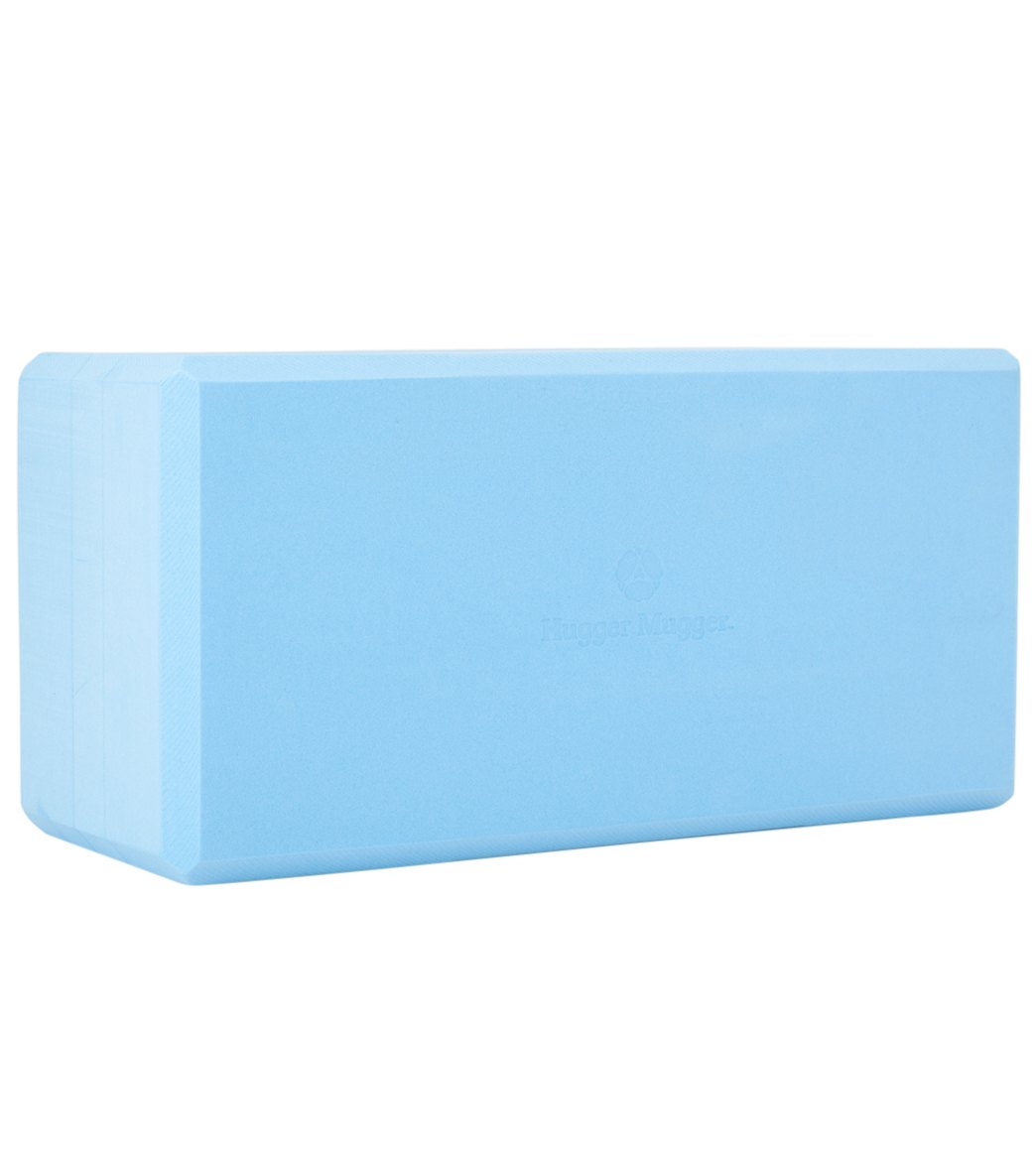Popular Yoga Block Reviews
What Kind of Yoga Block is Best for You?
Blocks are yoga's most versatile tool, and a must-have for any home practice. In restorative poses, blocks support you. In standing poses, blocks unlock your best alignment.There are hundreds of ways to incorporate yoga blocks into your practice (check out our short-list at the bottom of this article for ideas).
Stiff? Blocks help you gain flexibility without compromising your form.
Limber? Blocks help you engage your muscles and find strength.
Here's everything you need to know about investing in this powerful prop.
Size
Most yoga studio blocks are 9" wide, 6" high, and 4" in diameter, like the Gaiam Foam Yoga Block. If you're unsure about what dimension you want, 4” diameter blocks are a good bet.

A second option is a 3” diameter block, like the slim the 3” Hugger Mugger Foam Block. The difference between 3” and 4” diameter blocks is subtle, and a matter of personal preference.

If you're a large person or know you want extra stability, 5” diameter blocks like the Hugger Mugger Big Yoga Block (5" x 6.75" x 12") are a good option.

We personally love the 4” diameter standard size blocks. They feel like the right size in your hand and stack on top of each other nicely – leading into our next point…
Buy Two Blocks
One block is better than none at all, but the moment you own one yoga block, you'll immediately wish you had two.
With two blocks, you can create symmetry in poses like Pyramid by placing a block under each palm. This is essential for improving hamstring flexibility.

You can create supported backbends and heart openers that support both your neck and your spine.

Stack blocks on top of each other so the floor rises to meet you (instead of you straining toward the floor) in various forward folds. Place one block under your hip and the other under your head in pigeon. The combinations of how you can enhance your practice with two blocks are endless!
Foam, Cork or Wood?

Foam blocks are the cheapest, lightest, and easiest to move around the mat. Foam material has some give, making foam blocks soft for your hips, forehead, and sits-bones.
Cons are that because foam is somewhat malleable, these blocks can dent and dirty easily.

On the opposite end of the spectrum, wood blocks are designed to last a lifetime. They're resistant to surface scratches and never dent.
Cons are that they are expensive. Polished wood can also get slippery when doused in sweat (wood blocks can even slip when stacked).
Wood blocks are also heavy at around 2 pounds each. Some yogis find the dense construction of wood grounding and enjoyable. Others don't like how they're heavy to move around the mat (especially with just one hand), or the loud ‘thwack' they make if they fall to the ground.
Regardless of what camp you're in, you're not going to want to toss wood blocks in your backpack or suitcase anytime soon.

Between the extremes of foam and wood in terms of material are cork blocks. While cork blocks are heavy like wood blocks, cork has a bit more give than solid wood (so if you're bony, they'll be more pleasant to sit on).
Cork blocks maintain traction when wet. Cork as a material has self-cleaning properties. So cork blocks are perfect for sweaty yogis!
Cons are that cork blocks are expensive - $18 - $20 each, while foam blocks are just $8 - $9 a piece.
|
|
|
|
|
|
Pros
|
Lightweight, soft, inexpensive
|
Traction, stable, sweat-proof
|
Grounding and indestructible
|
|
Cons
|
Dents & dirties easily
|
Heavy, not super soft |
Hard, slippery when wet |
|
Weighs
|
.5lbs
|
2lbs |
2lbs |
|
Cost
|
$8 - $15
|
$12 - $18 |
$19 - $30+ |
Bonus List!
5 Ways Blocks Can Improve Your Practice (at any level)
1. Squeeze a block between your thighs to activate your legs in poses like bridge, plank and even Tadasana (Mountain Pose).
2. Press into blocks with your hands to find more length in your spine in poses like Pyramid and Twisted Triangle.
3. Discover your balance in a tricky poses like Ardha Chandrasana (Half Moon) by placing a block under your palm, a foot in front of your pinky toe.
4. Place a block under your spine for a supported backbend, beneath your hip in pigeon, below your forehead in forward folds.
5. Sit on a block in meditation.
Enjoy!
About the Author

Brett Larkin teaches yoga and meditation on her YouTube channel, where thousands of students have studied with her for more than 10 million minutes. Find her "yoga hacks," yoga teacher training tips, and free yoga/meditation classes at BrettLarkin.com.

